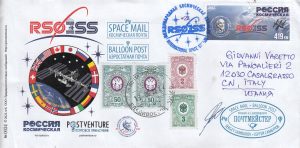 Radio amateur’s passion is often linked to “Philately”, especially that which recalls the Arctic and Antarctica but also, always in terms of radio contacts, also to the Space as in the case of the International Space Station RSØISS.
Radio amateur’s passion is often linked to “Philately”, especially that which recalls the Arctic and Antarctica but also, always in terms of radio contacts, also to the Space as in the case of the International Space Station RSØISS.
The soul and creator of this particular passion is Valery Ivanovich Sushkov RMØL who has been pursuing for years this important initiative with determination.
 A hobby or a passion?
A hobby or a passion?
One thing is certain: collectors from all over the world are attracted by this trend, which contains cultural and scientific implications .
On April 18, 2024 at the Ryazan Museum of Travelers in Ryazan city, a special cancellation solemn ceremony of postal issues in the “Great Russian Travelers” line took place. Under the press of philaturism was attended by signatories: outstanding Russian traveler, Honorary polar explorer, Mikhail Georgievich Malakhov Hero of Russia, Alexander Nikolaevich Kapitanov Director of the Ryazan Travelers Museum, author and director of the project “Great Russian Travelers”, 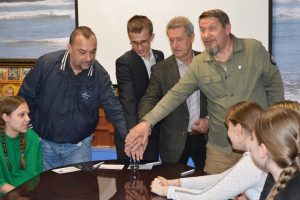 travel researcher, postal historian, winner of the “Geographical Oscar”, author of the term “philaturism” presented by “Bottle Mail”, “Traveller’s Mail” and “Polar Mail“, which include postcards, vignette stamps and a special postmark, Valery Ivanovich Sushkov RMØL and students at one of the secondary schools in Ryazan.
travel researcher, postal historian, winner of the “Geographical Oscar”, author of the term “philaturism” presented by “Bottle Mail”, “Traveller’s Mail” and “Polar Mail“, which include postcards, vignette stamps and a special postmark, Valery Ivanovich Sushkov RMØL and students at one of the secondary schools in Ryazan.
Also, Valery Sushkov, in that ceremony, awarded Mikhail Georgievich Malakhov with a table medal named after Admiral Peter Ricord, associate and friend of Ryazan Vasily Golovnin, for his outstanding contribution to the development of the Far East in the field of studying and developing the recreational potential, historical, geographical, natural and cultural heritage of the Far East and the Arctic Russian Federation, as well as a certificate of honor from the project “Great Russian Travelers.
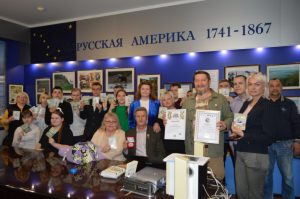 The purpose of the historical-geographical, scientific-educational, film-publishing, tourism-local history and memorial Project “Great Russian Travelers” is the revival of the traditions of Russian travelers in research and discovery, the popularization and promotion of tourism and postal business, highlighting their contribution to the economy of Russian society and the development of ties between the peoples of different countries.
The purpose of the historical-geographical, scientific-educational, film-publishing, tourism-local history and memorial Project “Great Russian Travelers” is the revival of the traditions of Russian travelers in research and discovery, the popularization and promotion of tourism and postal business, highlighting their contribution to the economy of Russian society and the development of ties between the peoples of different countries.

 Thanks to the efforts of the staff actually on Petrel Base (
Thanks to the efforts of the staff actually on Petrel Base (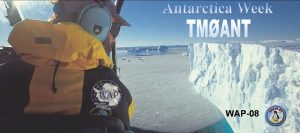 We must say that the 1st edition (2004) of the
We must say that the 1st edition (2004) of the 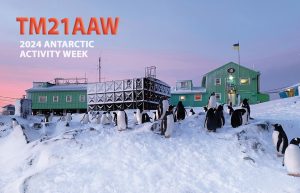 The picture on TM21AAW’s card, shows the Ukranian Antarctic Akademic Vernadsky Station (WAP UKR-Ø1) located at 65˚14′ South, 64˚15′ West, Marina Point on GalindezIsland in the Argentine islands Archipelago. The Faraday British Research base was established there in 1947 and transferred to Ukraine in 1996.
The picture on TM21AAW’s card, shows the Ukranian Antarctic Akademic Vernadsky Station (WAP UKR-Ø1) located at 65˚14′ South, 64˚15′ West, Marina Point on GalindezIsland in the Argentine islands Archipelago. The Faraday British Research base was established there in 1947 and transferred to Ukraine in 1996.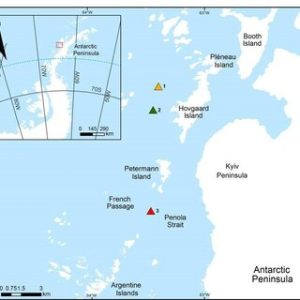 beauty. On those occasions, a “Field Camp” is installed and who knows… maybe one day even an expedition of radio amateurs will give us the pleasure of this “
beauty. On those occasions, a “Field Camp” is installed and who knows… maybe one day even an expedition of radio amateurs will give us the pleasure of this “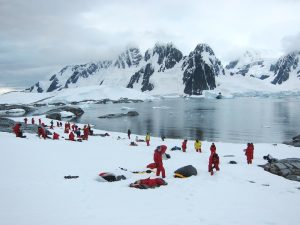 has overtaken the original name in usage. The name Krogmann Point has been given to the western extremity of Hovgaard Island.
has overtaken the original name in usage. The name Krogmann Point has been given to the western extremity of Hovgaard Island.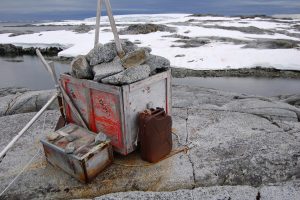 gently sloping smooth rock and snow.
gently sloping smooth rock and snow.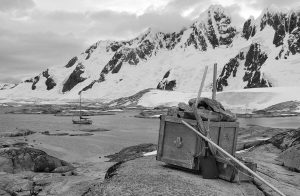 The cache is located up high on weathered stone where it is unlikely to be troubled by snow or ice during the winter. The cache contains emergency supplies for trapped ship-wrecked expedition; inside will be timed food, fire supplies and a tent.
The cache is located up high on weathered stone where it is unlikely to be troubled by snow or ice during the winter. The cache contains emergency supplies for trapped ship-wrecked expedition; inside will be timed food, fire supplies and a tent.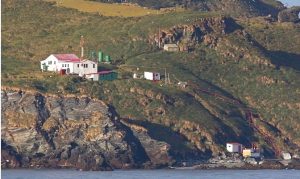 Gonzalo Island (56° 31’ 15” South, 68° 42’ 40” West), is a Sub-Antarctic island, uninhabited except for a Weather and Research Station (
Gonzalo Island (56° 31’ 15” South, 68° 42’ 40” West), is a Sub-Antarctic island, uninhabited except for a Weather and Research Station (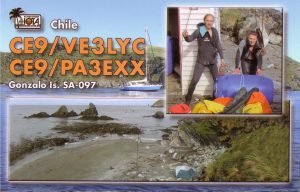
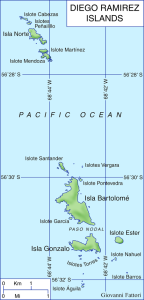 The important mission of the Diego Ramirez Island Lighthouse
The important mission of the Diego Ramirez Island Lighthouse April 5th 2024, INDIA’s NCPOR 24th Foundation Day
April 5th 2024, INDIA’s NCPOR 24th Foundation Day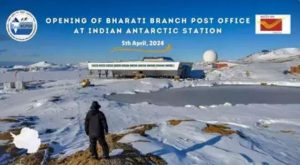 In this historic moment, as a part of the foundation day celebrations, the Indian Postal Services, in collaboration with NCPOR, inaugurated a new Branch Post Office at Bharati Station (
In this historic moment, as a part of the foundation day celebrations, the Indian Postal Services, in collaboration with NCPOR, inaugurated a new Branch Post Office at Bharati Station (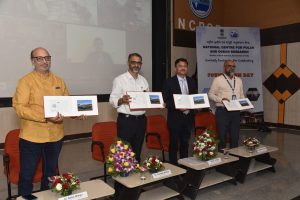 Chief Postmaster General Mumbai, Shri K.K. Sharma, officiated the opening, unveiling a special Picture Postcard of Bharati Station that was released on the occasion with the presence of Shri. R. P. Patil, Director Postal Services, Goa Region, Dr. Thamban Meloth, Director NCPOR, Dr. Rahul Mohan, Group Director and Scientist at NCPOR and the Team leaders of Maitri and Bharati Stations.
Chief Postmaster General Mumbai, Shri K.K. Sharma, officiated the opening, unveiling a special Picture Postcard of Bharati Station that was released on the occasion with the presence of Shri. R. P. Patil, Director Postal Services, Goa Region, Dr. Thamban Meloth, Director NCPOR, Dr. Rahul Mohan, Group Director and Scientist at NCPOR and the Team leaders of Maitri and Bharati Stations.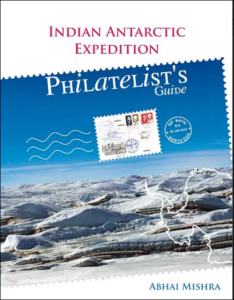 India’s first post office in Antarctica was setup in 1984 at the Dakshin Gangotri Station, which was the country’s first scientific base there, according to a report by Indian Express. Around 10,000 letters and mails had been posted and cancelled at the icy continent’s post office. Significance of post office with Indian address in Antarctica The Antarctica has 2 research stations – Maitri and Bharati – both are a part of the Goa postal division.
India’s first post office in Antarctica was setup in 1984 at the Dakshin Gangotri Station, which was the country’s first scientific base there, according to a report by Indian Express. Around 10,000 letters and mails had been posted and cancelled at the icy continent’s post office. Significance of post office with Indian address in Antarctica The Antarctica has 2 research stations – Maitri and Bharati – both are a part of the Goa postal division. 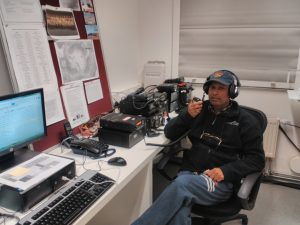 In the list taken from the dedicated Indian philately history of Abhai Mishra’s book (see
In the list taken from the dedicated Indian philately history of Abhai Mishra’s book (see 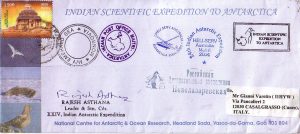 In 1988-89, the Dakshin Gangotri Station (
In 1988-89, the Dakshin Gangotri Station (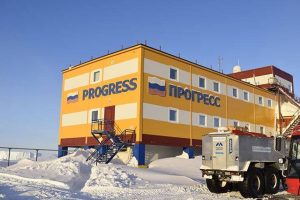 Igor is very active on all bands, Actually it’s easy to work him CW on 10 mts as conditions seems to be good on 28 MHz, but also 20 & 40 mts.
Igor is very active on all bands, Actually it’s easy to work him CW on 10 mts as conditions seems to be good on 28 MHz, but also 20 & 40 mts.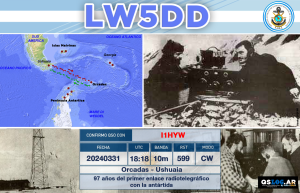 It was a chance with profound symbolic value; losing it would have been a real shame.
It was a chance with profound symbolic value; losing it would have been a real shame.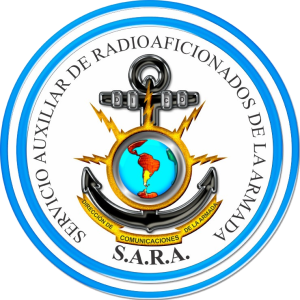

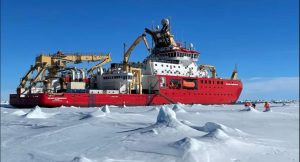 Climate researchers on board the RRS Sir David Attenborough have described their latest polar expedition as “really successful”.
Climate researchers on board the RRS Sir David Attenborough have described their latest polar expedition as “really successful”. when the sounds of the Morse alphabet were heard for the first time in Antarctica; fundamental step in the development of communications at those latitudes, That day at the Meteorological Observatory of the South Orkney Islands, the Orkney Station (LRT) was officially inaugurated.
when the sounds of the Morse alphabet were heard for the first time in Antarctica; fundamental step in the development of communications at those latitudes, That day at the Meteorological Observatory of the South Orkney Islands, the Orkney Station (LRT) was officially inaugurated. When on that historic day, March 30, 1927, the Morse sounds of the letters were heard and repeated at rhythmic intervals: “LRT… LRT…”, everyone shouted in unison “We… We… Finally …Finally…”, the question was: Who is calling us? and immediately you could hear “LRT… LRT… de LIK… LIK… LIK…”; exclaiming all together “They’re calling us from Ushuaia.”
When on that historic day, March 30, 1927, the Morse sounds of the letters were heard and repeated at rhythmic intervals: “LRT… LRT…”, everyone shouted in unison “We… We… Finally …Finally…”, the question was: Who is calling us? and immediately you could hear “LRT… LRT… de LIK… LIK… LIK…”; exclaiming all together “They’re calling us from Ushuaia.”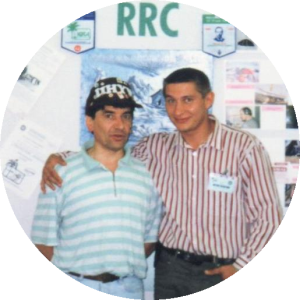 Ham Radio is something of incredibile!
Ham Radio is something of incredibile! Valery Sushkov RMØL (ex RW3GW) is a travel researcher, postal historian, travel marketer, documentarian, chief postmaster of the International Philaturism Society, author of the new concept of “philaturism” in the history of world tourism practice, curator of the World Postal Mail Museum. Head of the Project “POSTVENTURE & Postal Adventure”. Visited more than 50 countries of the world, participant and organizer of more than 100 different expeditions on 6 continents, conqueror of the South
Valery Sushkov RMØL (ex RW3GW) is a travel researcher, postal historian, travel marketer, documentarian, chief postmaster of the International Philaturism Society, author of the new concept of “philaturism” in the history of world tourism practice, curator of the World Postal Mail Museum. Head of the Project “POSTVENTURE & Postal Adventure”. Visited more than 50 countries of the world, participant and organizer of more than 100 different expeditions on 6 continents, conqueror of the South 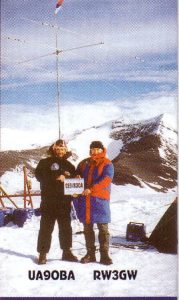 Pole and the highest peak in Africa – Mount Kilimanjaro, member of the Russian Geographical Society – Society for the Study of the Amur Region, member of the Union of Journalists of Russia, laureate and winner of the National Awards of the Russian Geographical Society “Crystal Compass”.
Pole and the highest peak in Africa – Mount Kilimanjaro, member of the Russian Geographical Society – Society for the Study of the Amur Region, member of the Union of Journalists of Russia, laureate and winner of the National Awards of the Russian Geographical Society “Crystal Compass”. Philaturism is educational and adventure tourism and the study of territories through the prism of philately and postal history, something new born from the fervent mondo f Valery!.
Philaturism is educational and adventure tourism and the study of territories through the prism of philately and postal history, something new born from the fervent mondo f Valery!. It’s a real shame! Six people visited Platcha Hut, a brand “New One” for many Antarctic Hunters, and nobody brought an HF Radio, to operate a little while from there, and living us the pleasure to log a rare spot in Antarctica!
It’s a real shame! Six people visited Platcha Hut, a brand “New One” for many Antarctic Hunters, and nobody brought an HF Radio, to operate a little while from there, and living us the pleasure to log a rare spot in Antarctica!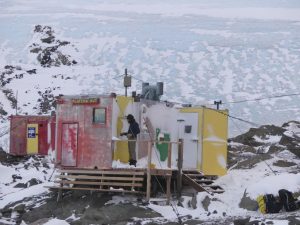 Platcha Hut 68° 30′ 47″ South, 78° 30′ 36″ East is situated in an extemely handy spot at the base of the plateau just to the south of Breid Basin a few metres above the shoreline. The locale is easy to reach by helicopter in the summer and is a decent walk over rough terrain from Davis Station for the keen. In the winter, Platcha Hut is one of the first to be visited once the sea ice forms and is thick enough. From Davis quads or Hägglunds, head along a waypointed route that follows Long Fjord to Breid Basin. The Hut itself sleeps four in bunk beds with room for two in the recently renovated (2011) Met Hut (the original Platcha) at the back.
Platcha Hut 68° 30′ 47″ South, 78° 30′ 36″ East is situated in an extemely handy spot at the base of the plateau just to the south of Breid Basin a few metres above the shoreline. The locale is easy to reach by helicopter in the summer and is a decent walk over rough terrain from Davis Station for the keen. In the winter, Platcha Hut is one of the first to be visited once the sea ice forms and is thick enough. From Davis quads or Hägglunds, head along a waypointed route that follows Long Fjord to Breid Basin. The Hut itself sleeps four in bunk beds with room for two in the recently renovated (2011) Met Hut (the original Platcha) at the back. The present Platcha Hut was built in 1982. On the 9th of September the internal fit-out was transported to Platcha and by the 16th of September the hut was completed and ready for occupation which was a mammoth effort by the wintering team of 1982.
The present Platcha Hut was built in 1982. On the 9th of September the internal fit-out was transported to Platcha and by the 16th of September the hut was completed and ready for occupation which was a mammoth effort by the wintering team of 1982. Luis Risopatrón Refuge is an Antarctic Chilean refuge, located at 60°22’17” South, 59°42’53” West on the north shore of Coppermine Cove, Robert Island in Nelson Strait on South Shetland Islands
Luis Risopatrón Refuge is an Antarctic Chilean refuge, located at 60°22’17” South, 59°42’53” West on the north shore of Coppermine Cove, Robert Island in Nelson Strait on South Shetland Islands Risopatrón, although, due to its characteristics it was known for quite a bit of time, as Luis Risopatrón Refuge. The shelter is located 40 m above sea level, on a solid rock surface, 150 m from the coast. 20 km from the closest base, Captain Arturo Prat, (
Risopatrón, although, due to its characteristics it was known for quite a bit of time, as Luis Risopatrón Refuge. The shelter is located 40 m above sea level, on a solid rock surface, 150 m from the coast. 20 km from the closest base, Captain Arturo Prat, ( Antarctic Base, which did participate in the activities of the International Geophysical Year on March 3, 1957. This Base was set 60 meters from the O’Higgins Base (
Antarctic Base, which did participate in the activities of the International Geophysical Year on March 3, 1957. This Base was set 60 meters from the O’Higgins Base ( Last march 10th 2024, the marathon for the “120th Anniversary” of Argentina’s presence in
Last march 10th 2024, the marathon for the “120th Anniversary” of Argentina’s presence in  All Digital Certificates, available to those who did work the Argentina’s Bases in Antartica and other official LU station which work within the event, could download their own confirmation by entering the QSLOG.AR website at:
All Digital Certificates, available to those who did work the Argentina’s Bases in Antartica and other official LU station which work within the event, could download their own confirmation by entering the QSLOG.AR website at: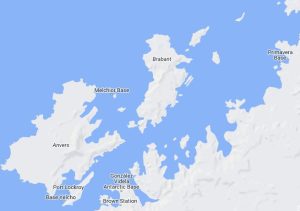 Brabant Island, lying off the west coast of the Antarctic Peninsula at 64°15’South, 62°20’West, is the second largest Island of the Palmer Archipelago within the British Antarctic Territory. Brabant Island, 59 km (37 mi) long north-south, 30 km (19 mi) wide, is lying between Anvers Island and Liège island. It had only been visited on six very brief occasions since its discovery in 1898, although a 1/200 000 topographic map had been produced in 1963 from FIDASE aerial photography.
Brabant Island, lying off the west coast of the Antarctic Peninsula at 64°15’South, 62°20’West, is the second largest Island of the Palmer Archipelago within the British Antarctic Territory. Brabant Island, 59 km (37 mi) long north-south, 30 km (19 mi) wide, is lying between Anvers Island and Liège island. It had only been visited on six very brief occasions since its discovery in 1898, although a 1/200 000 topographic map had been produced in 1963 from FIDASE aerial photography.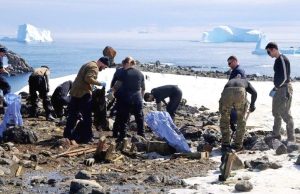
 As widely announced, last month of February, the 21st edition of the
As widely announced, last month of February, the 21st edition of the 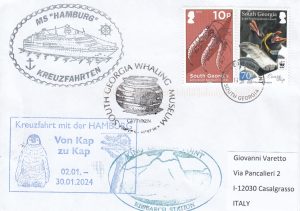
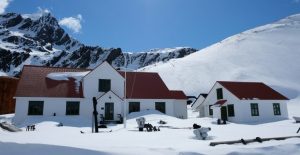 Exhibits include discovery, exploration, Shackleton, surveying and mountaineering expeditions, sealing in the late 18th and early 19th centuries, the early days of whaling, techniques of modern whaling in the middle part of the 20th century, whalers’ social life, maritime history, and natural history. Displays also cover the 1982 conflict and subsequent British military presence until 2001.
Exhibits include discovery, exploration, Shackleton, surveying and mountaineering expeditions, sealing in the late 18th and early 19th centuries, the early days of whaling, techniques of modern whaling in the middle part of the 20th century, whalers’ social life, maritime history, and natural history. Displays also cover the 1982 conflict and subsequent British military presence until 2001. GSGSSI has responsibility for the operational buildings and infra-structure associated with the museum. The
GSGSSI has responsibility for the operational buildings and infra-structure associated with the museum. The 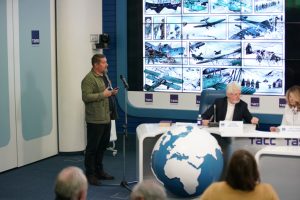 A press conference, a special post card cancellation ceremony, and a presentation of a quest route was held in Moscow in honor of the 90th Anniversary of the heroic epic of the rescue of the Chelyuskints and the establishment of the title of Hero of the Soviet Union.
A press conference, a special post card cancellation ceremony, and a presentation of a quest route was held in Moscow in honor of the 90th Anniversary of the heroic epic of the rescue of the Chelyuskints and the establishment of the title of Hero of the Soviet Union.
 At the end of the press conference, a solemn ceremony of special cancellation of a special postal card and a stamp with a limited edition and a presentation of the city memorial, historical, cultural and philaturist quest route in Moscow, took place.
At the end of the press conference, a solemn ceremony of special cancellation of a special postal card and a stamp with a limited edition and a presentation of the city memorial, historical, cultural and philaturist quest route in Moscow, took place. WAP Antarctic Bulletin nr. 302, released on Febr. 18th 2024 is available online with last info and reported activity from Antarctica.
WAP Antarctic Bulletin nr. 302, released on Febr. 18th 2024 is available online with last info and reported activity from Antarctica.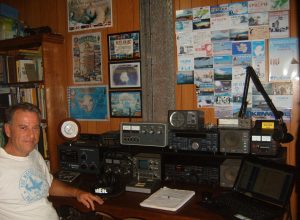 John (SK), formerly VK2FR and VK2ANT, was a skilled radio Ham that spoke to many people around the world including those at Antarctic Bases and research stations over the last four decades.
John (SK), formerly VK2FR and VK2ANT, was a skilled radio Ham that spoke to many people around the world including those at Antarctic Bases and research stations over the last four decades.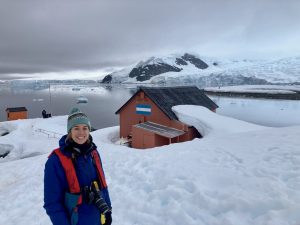 Aimee Sharpe wrote
Aimee Sharpe wrote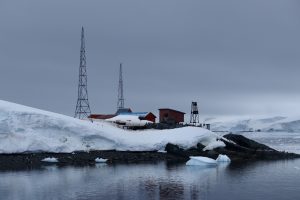 The WAP
The WAP 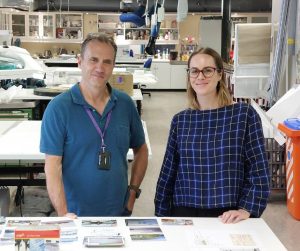 The
The 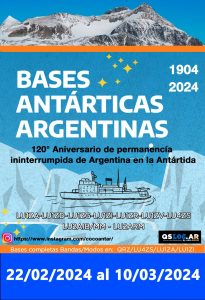 Beside the WAP’s Antarctic Activity Week which runs from
Beside the WAP’s Antarctic Activity Week which runs from  Date:
Date: Wilkins Aerodrome at 66°41’27″South, 111°31’35″East is named after the legendary patron and pioneer of early Antarctic aviation, Sir Hubert Wilkins.
Wilkins Aerodrome at 66°41’27″South, 111°31’35″East is named after the legendary patron and pioneer of early Antarctic aviation, Sir Hubert Wilkins. ensure that the surface ice has suitable bearing strength and integrity to support the aircraft.
ensure that the surface ice has suitable bearing strength and integrity to support the aircraft.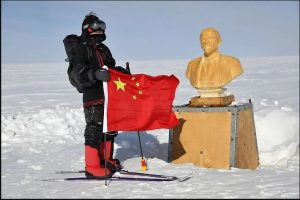 Chinese explorer and adventurer, Feng Jing, hiked to the Southern Pole of Inaccessibility (
Chinese explorer and adventurer, Feng Jing, hiked to the Southern Pole of Inaccessibility (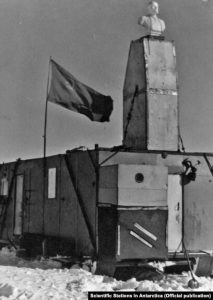 The station had a hut for four people, a radio shack, and an electrical hut. These buildings had been constructed on the tractors used during the traverse, serving as accommodation. On top of the camp structures, they placed the Lenin bust. Next to the hut, an airstrip was cleared and a Li-2 aircraft landed there on 18 December 1958. The outpost was equipped with a diesel power generator and a transmitter. Pole of Inaccessibility Station performed meteorological observations from 14 to 26 December 1958.
The station had a hut for four people, a radio shack, and an electrical hut. These buildings had been constructed on the tractors used during the traverse, serving as accommodation. On top of the camp structures, they placed the Lenin bust. Next to the hut, an airstrip was cleared and a Li-2 aircraft landed there on 18 December 1958. The outpost was equipped with a diesel power generator and a transmitter. Pole of Inaccessibility Station performed meteorological observations from 14 to 26 December 1958. The 8th Soviet Antarctic Expedition visited the site on 1 February 1964 and left five days later.
The 8th Soviet Antarctic Expedition visited the site on 1 February 1964 and left five days later. February 10, 11 and 12, 2024, the Argentine Ship Fragata ARA Libertad will be on air for 3 days. It will be a chance, an opportunity not to be missed!
February 10, 11 and 12, 2024, the Argentine Ship Fragata ARA Libertad will be on air for 3 days. It will be a chance, an opportunity not to be missed! Argentine and Foreign Amateur Radio Stations will be able to download their QSL by entering the QSLOG.AR integrated system, through the website
Argentine and Foreign Amateur Radio Stations will be able to download their QSL by entering the QSLOG.AR integrated system, through the website 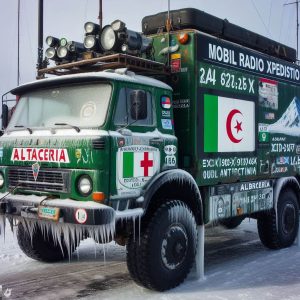
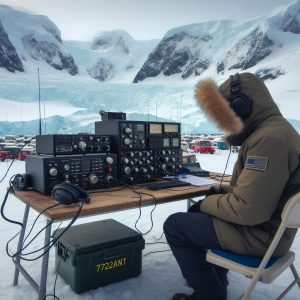 Kamel Ghalem, 7X2GK will participate in the 21st Antarctic Activity Week with the special callsign: 7T22ANT (
Kamel Ghalem, 7X2GK will participate in the 21st Antarctic Activity Week with the special callsign: 7T22ANT ( An interesting article published at:
An interesting article published at:  Horký, a traveller and documentary filmmaker, as well as an experienced polar explorer who has made expeditions to the three poles of the Earth (North, South and the Cold Pole), and Jan Šimánek, a cameraman. They will be shooting a unique documentary about the Czech Antarctic Research Programme for Czech Television.
Horký, a traveller and documentary filmmaker, as well as an experienced polar explorer who has made expeditions to the three poles of the Earth (North, South and the Cold Pole), and Jan Šimánek, a cameraman. They will be shooting a unique documentary about the Czech Antarctic Research Programme for Czech Television. (
(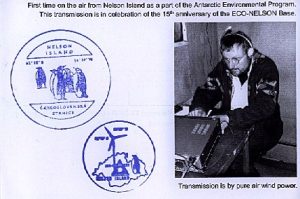
 On 23 January 1954, Argentine Navy personnel did inaugurate the Cabo Primavera Refuge (now Capitán Cobbett Naval Refuge) on a rocky promontory on Cape Primavera. Over many years this building was used by Argentine exploration expeditions to the area to collect Meteorology and Biology data.
On 23 January 1954, Argentine Navy personnel did inaugurate the Cabo Primavera Refuge (now Capitán Cobbett Naval Refuge) on a rocky promontory on Cape Primavera. Over many years this building was used by Argentine exploration expeditions to the area to collect Meteorology and Biology data.
 Eric sent us a preview of the new QSL of TM1ANT expressly designed for the 2024’s AAW .
Eric sent us a preview of the new QSL of TM1ANT expressly designed for the 2024’s AAW .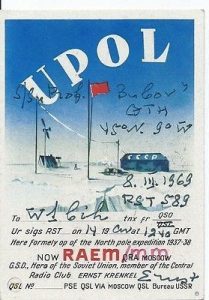 In the summer of 1924 Ernst Krenkel went to Leningrad with what little money he had saved, hoping to find employment as the radio operator on any ship undertaking a long voyage. At that time, only specially designated Soviet vessels went on long voyages, and in Leningrad there were already qualified naval radio operators without work. Just when Krenkel had given up all hope of finding work he was told that the hydrographic management bureau was in urgent need of a radio operator prepared to go on any expedition, to any island in the Arctic ocean. There was little interest because the pay was poor and it was necessary to be away for the whole year, living in ‘hellish’ conditions.
In the summer of 1924 Ernst Krenkel went to Leningrad with what little money he had saved, hoping to find employment as the radio operator on any ship undertaking a long voyage. At that time, only specially designated Soviet vessels went on long voyages, and in Leningrad there were already qualified naval radio operators without work. Just when Krenkel had given up all hope of finding work he was told that the hydrographic management bureau was in urgent need of a radio operator prepared to go on any expedition, to any island in the Arctic ocean. There was little interest because the pay was poor and it was necessary to be away for the whole year, living in ‘hellish’ conditions. wearing his new naval uniform he set off by train to Arkhangelsk (Archangel). On arrival he was assigned to the “ Yugorski Shar “ which was preparing to take the relief crew to the first Soviet polar observatory “Matochkin Shar”, constructed the year before on the northern coast of the Matochkin Shar strait of the Novaya Zemlya archipelago.
wearing his new naval uniform he set off by train to Arkhangelsk (Archangel). On arrival he was assigned to the “ Yugorski Shar “ which was preparing to take the relief crew to the first Soviet polar observatory “Matochkin Shar”, constructed the year before on the northern coast of the Matochkin Shar strait of the Novaya Zemlya archipelago. Ham radio was born in the USSR and Ernst Krenkel was delighted. Soon he was on-air using homebrew equipment, with the callsign EU2EQ (later U3AA).
Ham radio was born in the USSR and Ernst Krenkel was delighted. Soon he was on-air using homebrew equipment, with the callsign EU2EQ (later U3AA).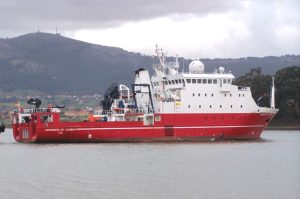 The Oceanographic Vessel (B/O) Sarmiento de Gamboa is a multidisciplinary research vessel with a global non-polar scope. Its instrumentation and laboratories allow it to carry out studies of global ocean circulation, marine biodiversity, fishery resources and climate change; It is also used to perform work in geology, marine geophysics, hydrography, physical and chemical oceanography, marine biology, resource estimation (fisheries), ocean monitoring with remotely operated vehicles (ROVs, AUVs, submarines, etc.), and deployment of underwater observatories (OBSEA, GEOSTAR)
The Oceanographic Vessel (B/O) Sarmiento de Gamboa is a multidisciplinary research vessel with a global non-polar scope. Its instrumentation and laboratories allow it to carry out studies of global ocean circulation, marine biodiversity, fishery resources and climate change; It is also used to perform work in geology, marine geophysics, hydrography, physical and chemical oceanography, marine biology, resource estimation (fisheries), ocean monitoring with remotely operated vehicles (ROVs, AUVs, submarines, etc.), and deployment of underwater observatories (OBSEA, GEOSTAR) It also has the most advanced technologies in terms of navigation systems (for example, dynamic positioning) and is the first Spanish oceanographic vessel that can work with high-depth ROVs (Remote Operated Vehicles) and AUVs (Autonomous Underwater Vehicle).
It also has the most advanced technologies in terms of navigation systems (for example, dynamic positioning) and is the first Spanish oceanographic vessel that can work with high-depth ROVs (Remote Operated Vehicles) and AUVs (Autonomous Underwater Vehicle). Kottas camp (74°12′ South, 9°44′ West) is a German Field Camp at Dronning Maud Land, Antarctica has been add to
Kottas camp (74°12′ South, 9°44′ West) is a German Field Camp at Dronning Maud Land, Antarctica has been add to 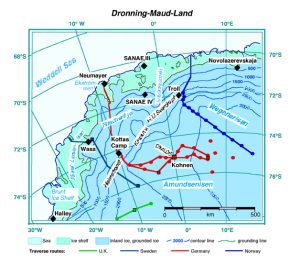 The 460km long stake line comprises approximately 950 stakes . It starts 10 km South of Neumayes at 70°41.83’ South, 8°26’24” West and ends after the crossing of Kottasberge at 74° 30’00” South, 9°13,09’ West.
The 460km long stake line comprises approximately 950 stakes . It starts 10 km South of Neumayes at 70°41.83’ South, 8°26’24” West and ends after the crossing of Kottasberge at 74° 30’00” South, 9°13,09’ West. 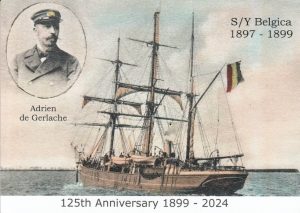 The Belgian Antarctic Expedition of 1897–1899 was the first expedition to winter in the Antarctic region. Led by Adrien de Gerlache de Gomery, it was the first Belgian Antarctic expedition and is considered the first expedition of the Heroic Age of Antarctic Exploration. Among its members were Frederick Cook and Roald Amundsen, explorers who would later attempt the respective conquests of the North and South Poles.
The Belgian Antarctic Expedition of 1897–1899 was the first expedition to winter in the Antarctic region. Led by Adrien de Gerlache de Gomery, it was the first Belgian Antarctic expedition and is considered the first expedition of the Heroic Age of Antarctic Exploration. Among its members were Frederick Cook and Roald Amundsen, explorers who would later attempt the respective conquests of the North and South Poles. S/Y Belgica did remain trapped in the ice for a long Antarctic winter.
S/Y Belgica did remain trapped in the ice for a long Antarctic winter. Edgeworth David Fied Camp (aka Edgeworth David Base) was established as a summer camp in 1986. Located at 66°14’59” South, 100°36’12” East , in the Northen Bunger Hills, Edgeworth David summer Base lies about 7 kilometres (4.3 mi) from WNW of Polish Antoni Dobrowolski Station (
Edgeworth David Fied Camp (aka Edgeworth David Base) was established as a summer camp in 1986. Located at 66°14’59” South, 100°36’12” East , in the Northen Bunger Hills, Edgeworth David summer Base lies about 7 kilometres (4.3 mi) from WNW of Polish Antoni Dobrowolski Station ( Edgeworth David Field Camp has been
Edgeworth David Field Camp has been The twenty third edition (release 1.43) of
The twenty third edition (release 1.43) of 
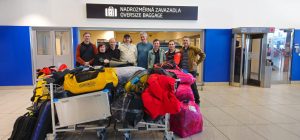 Few days ago, the Czech members of the Antarctic Expedition to Nelson Island were in Punta Arenas, Chile, waiting for a Brazilian ship to take them to their destination. That morning the host of
Few days ago, the Czech members of the Antarctic Expedition to Nelson Island were in Punta Arenas, Chile, waiting for a Brazilian ship to take them to their destination. That morning the host of 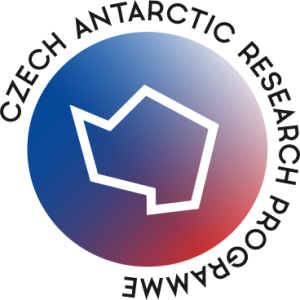
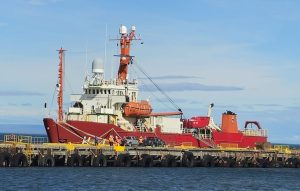 Antarctic Program, which will set sail this afternoon Jan 2nd 2024, heading Antarctica.
Antarctic Program, which will set sail this afternoon Jan 2nd 2024, heading Antarctica.

 Hi folks,
Hi folks,
 Our good friend Volker, DL8JDX is currently embarked on M/S Hamburg heading Antarctica. They will be in the Antarctic until Jan. 29, 2024… unfortunately, no radio from him!
Our good friend Volker, DL8JDX is currently embarked on M/S Hamburg heading Antarctica. They will be in the Antarctic until Jan. 29, 2024… unfortunately, no radio from him!
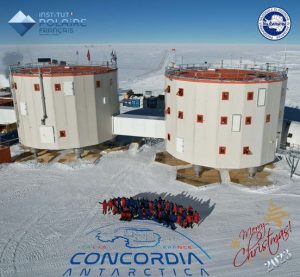

 On the cusp of the COP28 climate talks, U.N. Secretary-General Antonio Guterres visited Antarctica and stopped at Chilean Base P.te Eduardo Frei (
On the cusp of the COP28 climate talks, U.N. Secretary-General Antonio Guterres visited Antarctica and stopped at Chilean Base P.te Eduardo Frei (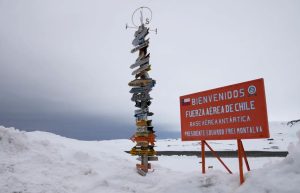 A study published in Nature Climate Change last month said warming has increased to the point that the ice sheet will now experience “unavoidable” melting regardless of how much the world reduces emissions of planet-warming gases like carbon dioxide.
A study published in Nature Climate Change last month said warming has increased to the point that the ice sheet will now experience “unavoidable” melting regardless of how much the world reduces emissions of planet-warming gases like carbon dioxide. Ernest Krenkel was an explorer, radio operator, doctor of geographical sciences (1938), and Hero of the Soviet Union (1938). He held several Ameteur Radio callsigns: EU2EQ, U3AA, UA3AA, RAEM and RAEM/MM. Born in Balystok, Poland 24 december 1903, Ernest Kernkel passes away in Moscow, on 8 december 1971.
Ernest Krenkel was an explorer, radio operator, doctor of geographical sciences (1938), and Hero of the Soviet Union (1938). He held several Ameteur Radio callsigns: EU2EQ, U3AA, UA3AA, RAEM and RAEM/MM. Born in Balystok, Poland 24 december 1903, Ernest Kernkel passes away in Moscow, on 8 december 1971.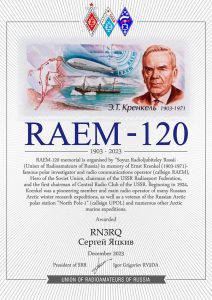 RAEM-120 Award
RAEM-120 Award
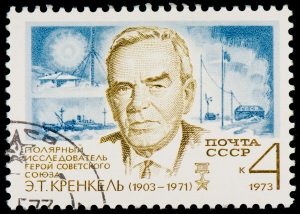 In 1934 RAEM was the callsign of the I/B Cheluskin smashed by ice in the North polar sea. I was the chief operatore –wrote krenkel- Since then RAEM is my personal amateur callsign.
In 1934 RAEM was the callsign of the I/B Cheluskin smashed by ice in the North polar sea. I was the chief operatore –wrote krenkel- Since then RAEM is my personal amateur callsign. A celebration held at Argentinean Base San Martín (
A celebration held at Argentinean Base San Martín (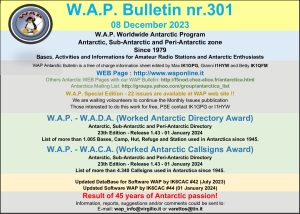 WAP Antarctic Bulletin nr. 301 relaesed today December 8th 2023 is available on line with last info and reported activity from Antarctica.
WAP Antarctic Bulletin nr. 301 relaesed today December 8th 2023 is available on line with last info and reported activity from Antarctica.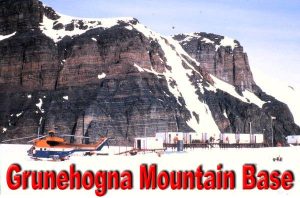 Grunehogna Mountain Base and Sarie Marais Field Base , at 72°Ø2’ØØ”South Ø2°48’ØØ”West, 1047 mts of altitude, seems to be two different Antarctic Bases but really, it’s the same site which holds two names. (pic on the Left, shows Grunehogna, while pic on the Right sows Sarie Marais).
Grunehogna Mountain Base and Sarie Marais Field Base , at 72°Ø2’ØØ”South Ø2°48’ØØ”West, 1047 mts of altitude, seems to be two different Antarctic Bases but really, it’s the same site which holds two names. (pic on the Left, shows Grunehogna, while pic on the Right sows Sarie Marais).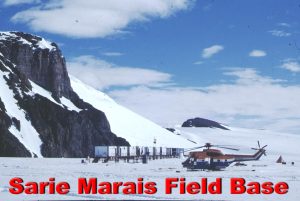 Located 250km inland from the main SANAE IV Base (
Located 250km inland from the main SANAE IV Base ( A QSL provided recently by Bob, K4MZU clearly show and documents a QSO dated 14 January 1992 with ZS5GMT Graham Tilbury who was operating
A QSL provided recently by Bob, K4MZU clearly show and documents a QSO dated 14 January 1992 with ZS5GMT Graham Tilbury who was operating  Humans didn’t discover Antarctica until 1820.
Humans didn’t discover Antarctica until 1820.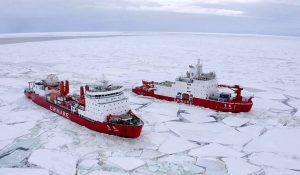 Two Chinese icebreaker research vessels and a cargo ship set sail last November 1st for the Antarctic with more than 460 personnel on board to help complete construction of China’s fifth Research Station on the world’s southernmost continent, which could be finished next year.
Two Chinese icebreaker research vessels and a cargo ship set sail last November 1st for the Antarctic with more than 460 personnel on board to help complete construction of China’s fifth Research Station on the world’s southernmost continent, which could be finished next year. The cargo ship “Tianhui”, or “Divine Blessings”(
The cargo ship “Tianhui”, or “Divine Blessings”( 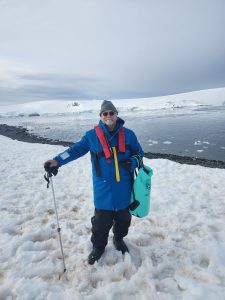 Don Conlee WX5DC is a professor at A&M Atmospheric Sciences in Texas.
Don Conlee WX5DC is a professor at A&M Atmospheric Sciences in Texas.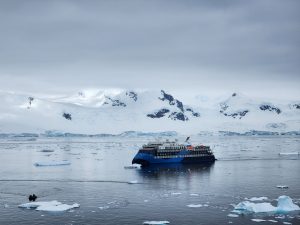 Don, along with class members, is actually on board of M/V Ocean Victory sailing to the South Shetland Islands/Antarctica .
Don, along with class members, is actually on board of M/V Ocean Victory sailing to the South Shetland Islands/Antarctica .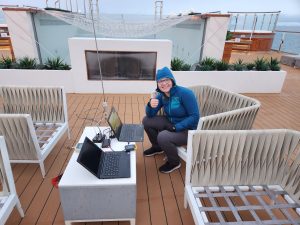 operate briefly before dinner and hopefully for the sweet spot of 0-3Z. Winds have died down and snow stopped, so fingers crossed-.
operate briefly before dinner and hopefully for the sweet spot of 0-3Z. Winds have died down and snow stopped, so fingers crossed-.  February 2024 marks the 21st edition of the Antarctic Activity Week (
February 2024 marks the 21st edition of the Antarctic Activity Week (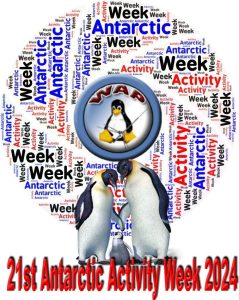 As known, the main purpose of the A.A.W. is to increase worldwide interest around Antarctic Continent and its related matters, with the aim of staying close to the researchers and personnel who are spending their time away from home and families, studying the Antarctic life and its secrets. Additional purpose is to share what Nations and Organizations are doing to protect this still non contaminated corner of the world, to share a message of peace WW.
As known, the main purpose of the A.A.W. is to increase worldwide interest around Antarctic Continent and its related matters, with the aim of staying close to the researchers and personnel who are spending their time away from home and families, studying the Antarctic life and its secrets. Additional purpose is to share what Nations and Organizations are doing to protect this still non contaminated corner of the world, to share a message of peace WW. The Captain Pieter J. Lenie Base (WAP USA-12) is an Antarctic summer base operated by the United States located at Copacabana Beach, Admiralty Bay (King George Island). About two kilometers northwest of this base, is the Polish Research Station Arctowski (WAP POL-Ø1).
The Captain Pieter J. Lenie Base (WAP USA-12) is an Antarctic summer base operated by the United States located at Copacabana Beach, Admiralty Bay (King George Island). About two kilometers northwest of this base, is the Polish Research Station Arctowski (WAP POL-Ø1). The new building of the Henryk Arctowski Polish Antarctic Station, will become operational in 2023. Two years earlier, as part of the tests, the structure will be assembled in Poland
The new building of the Henryk Arctowski Polish Antarctic Station, will become operational in 2023. Two years earlier, as part of the tests, the structure will be assembled in Poland
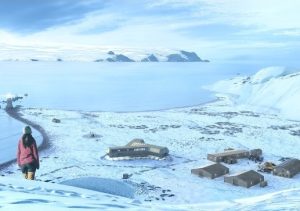 Ministry of Science announced that it would provide a designated purpose to modernize the station`s infrastructure and build a new main building. Its layout will resemble a three-pointed star. In the heart of the station there will be a common space where residents will spend time.
Ministry of Science announced that it would provide a designated purpose to modernize the station`s infrastructure and build a new main building. Its layout will resemble a three-pointed star. In the heart of the station there will be a common space where residents will spend time.